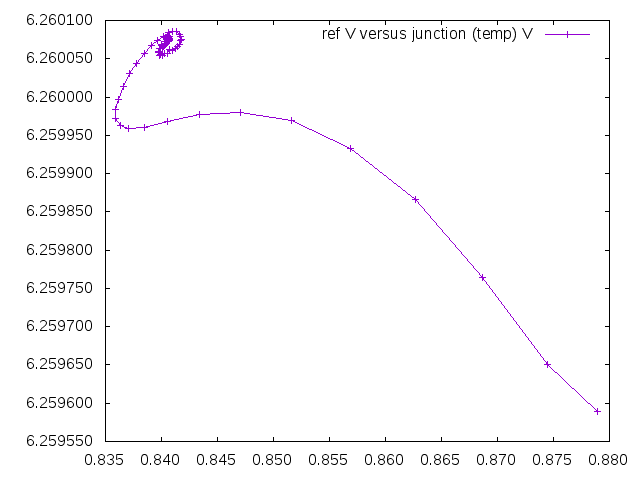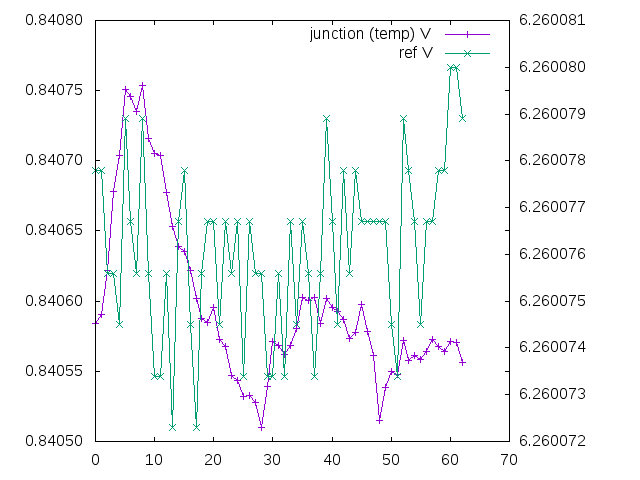Following the excellent advice in the comments here, I have tried implementing a test circuit,
The test prototype has the following features,
- incorporates current adjustment so that the tempco (temperature coefficient) of the two zeners may be balanced against each other
- uses the voltage drop of both the reverse biased and forward biased zeners to create the reference. This results in a higher current configuration (~20mA) which produces a lower noise output.
- uses a subtracting op-amp to extract the voltage drop across the forward-biased zener from the reference-output for use as an on-die temperature sensor (2mV ~= 1C)
- implements a propotional-integral control loop in response to the on-die temperature sense with an adjustable operational temperature setpoint (trimpot) and a 200ohm resistor bonded to the case of zener for heater stabilization.
The current adjustment to trim tempco balance is done by manual binary search. The procedure involves letting the unit cool, applying power and noting the direction of the output voltage as it heats. With some experimentation it is possible to dial in the reference voltage so that voltage initially increases and then dips slightly as temperature converges on the regulation setpoint.
Test data -
Two plots (others and more details at
http://blog.julian1.io/index.html)
The lhs represents area of higher temperature, and the rhs lower temperature. At startup, the temperature rises and the voltage increases. At a certain temperature the tempco (mV/C) of the forward biased zener is balanced by the tempco of the reversed biased zener, and a local vertex is reached. After a small retracement, there appears to be another unknown secondary affect and curve. The trace eventually converges on the regulation temperature/voltage.

Skipping the first startup observations, provides a higher resolution view on the y axis. The plot shows output voltage varying by 8uV over the course of approximately 15 minutes.
Conditions involve an open room, exposed breadboard, high-ambient temperatures over 30C, circulating air currents, and 7 digit values from the 6.5digit rated data-acquisition unit. Additionally the circuit uses only two precision resistors - the resistors for the op-amps are inexpensive 1/4watt and not tempco rated.
